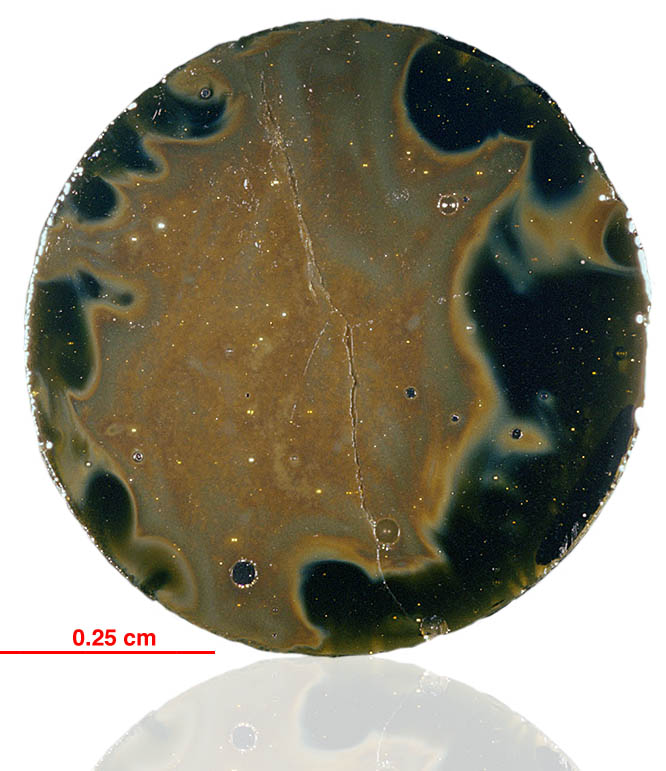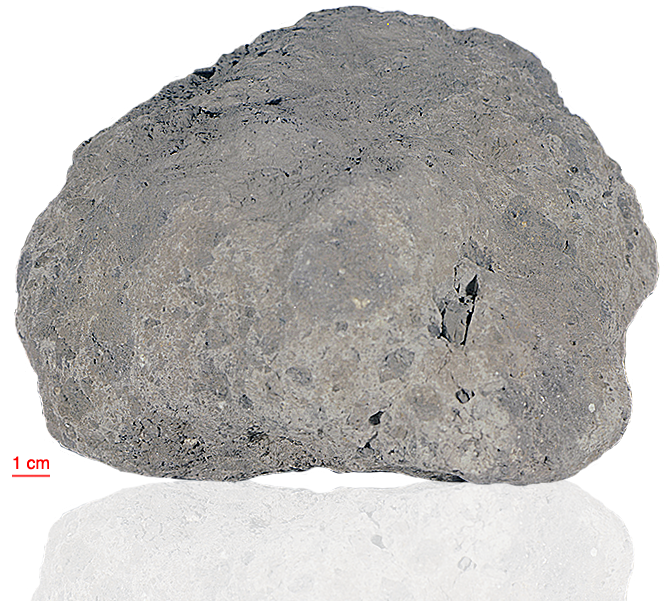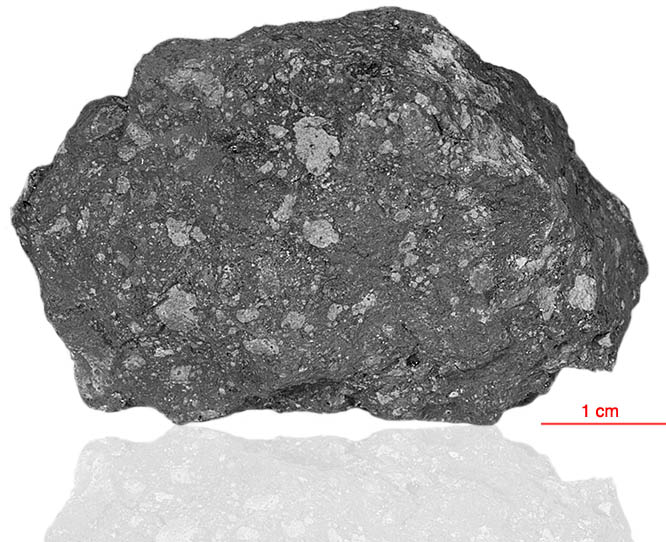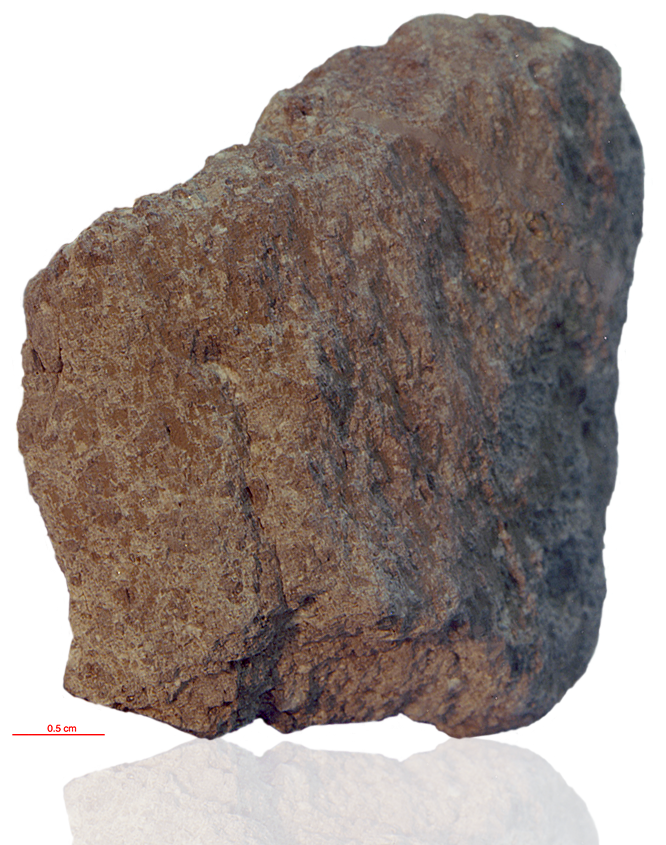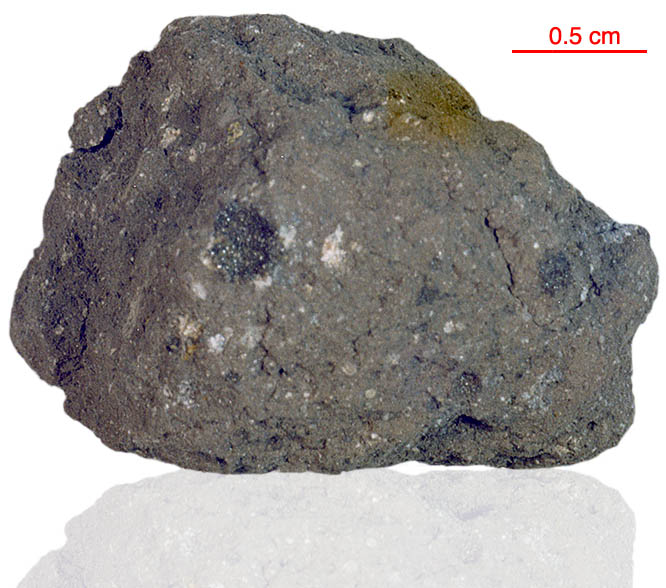
Fact sheet
14250 is part of the Comprehensive Sample collected by Apollo 14. Samples 14169-14188 and 14250-14299 were acquired as a statistically significant set of small rock samples to petrographically characterize the distribution of rock types in the lunar regolith. The sample location was selected 100 to 125 metres west of the lunar module. A two to three metre diameter circle was marked and all of the walnut sized rocks on the surface within the circle were collected with tongs. Sample 14250 is a medium grey, blocky, sub-angular, moderately friable, seriate fragmental rock. Rotation 1 shows a composite clast and rotation 2 shows a greenish glass-rich area.
The sample weighed 1730 grams before analysis.
Further details of this and other Apollo samples are here: http://curator.jsc.nasa.gov/lunar/
The Apollo 14 landing site was in a region formed by impact-basin debris.
Most of the 42 kilograms of rocks and soil collected on Apollo 14 are breccias (rocks that are composed of fragments of other, older rocks). In some cases, the rock fragments that form a breccia are themselves breccias. Such rocks obviously have experienced complex histories with multiple generations of impact events. Some breccias were heated enough that some of the material in the rock was melted.
Apollo 14 was launched on 31 January 1971.

